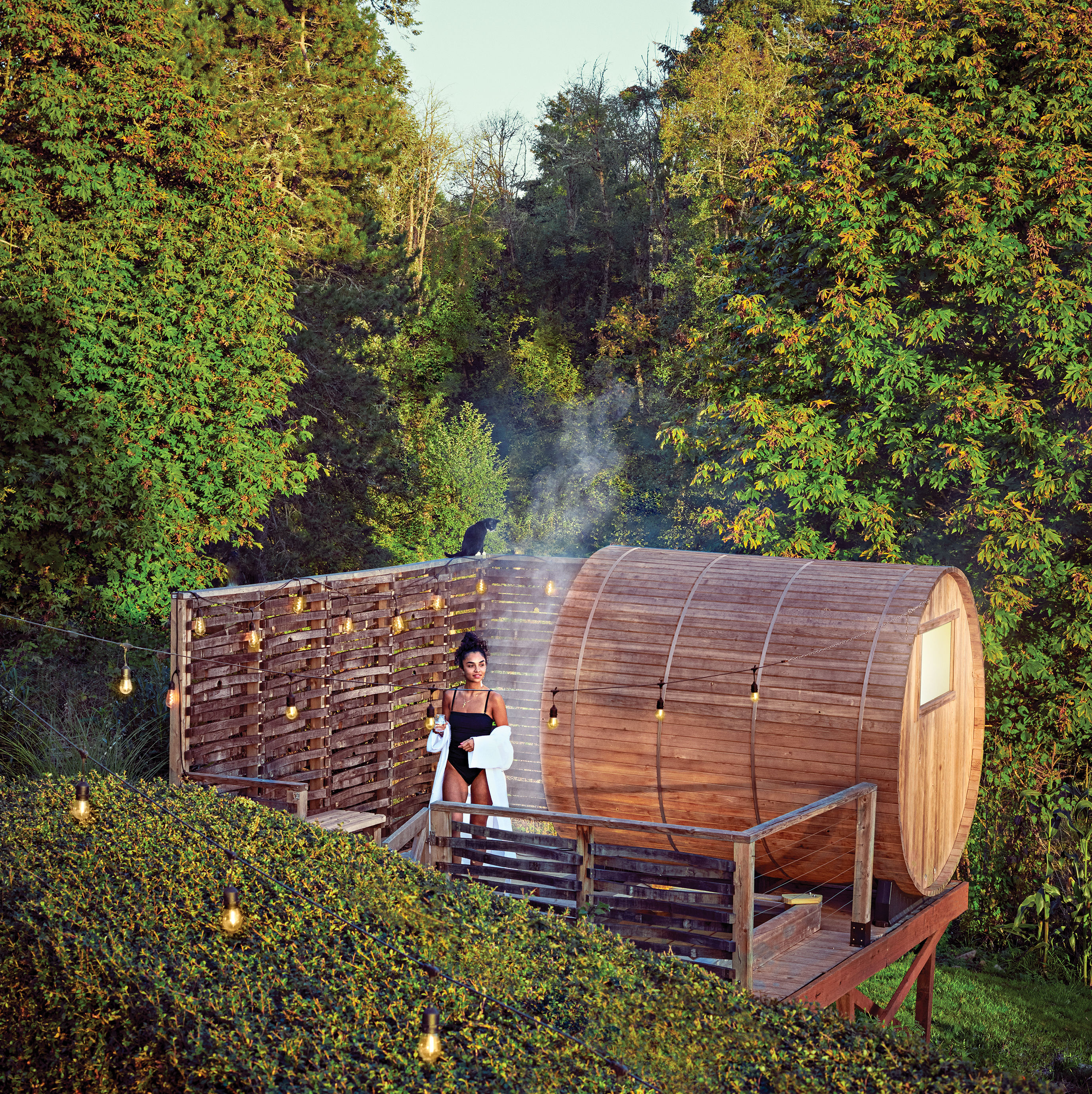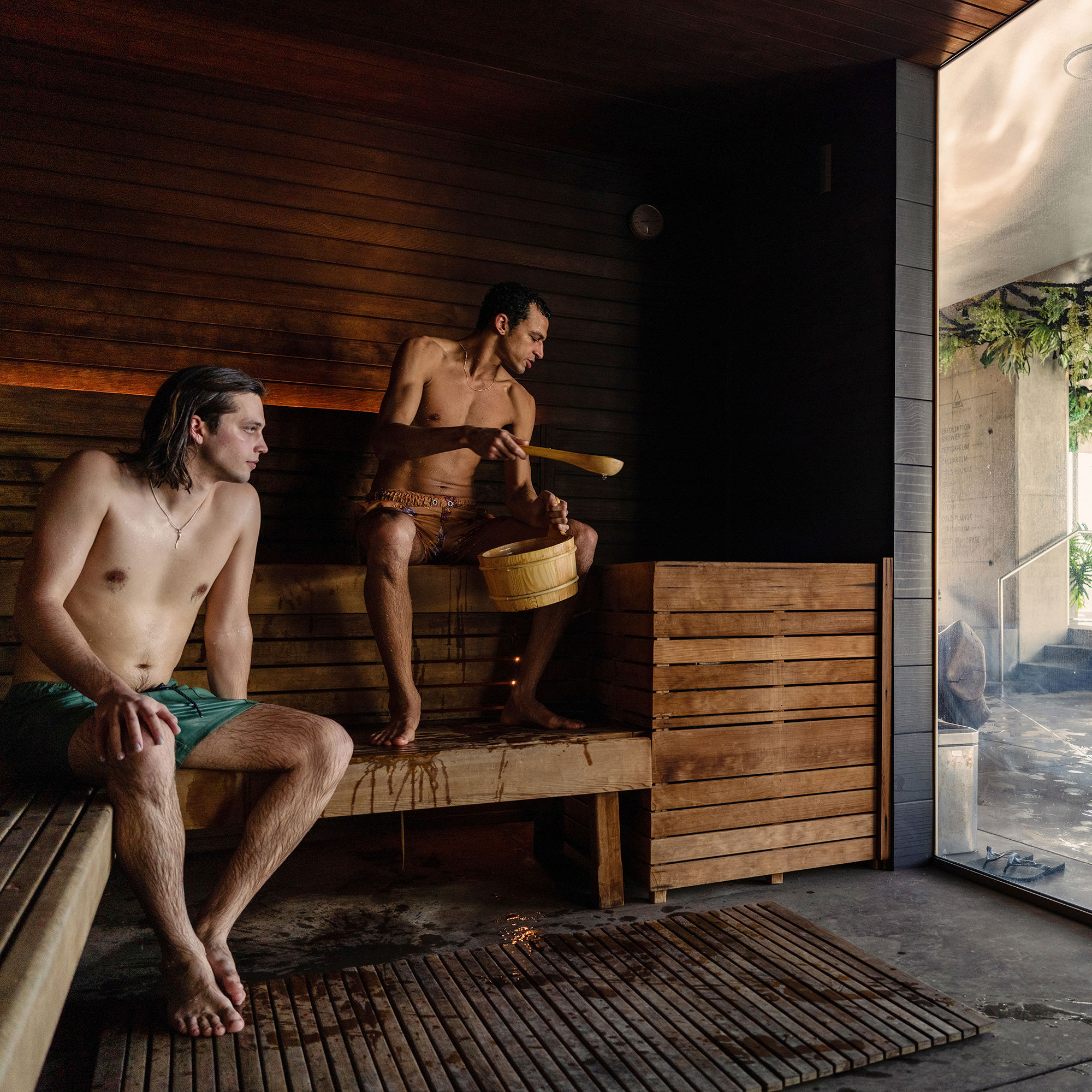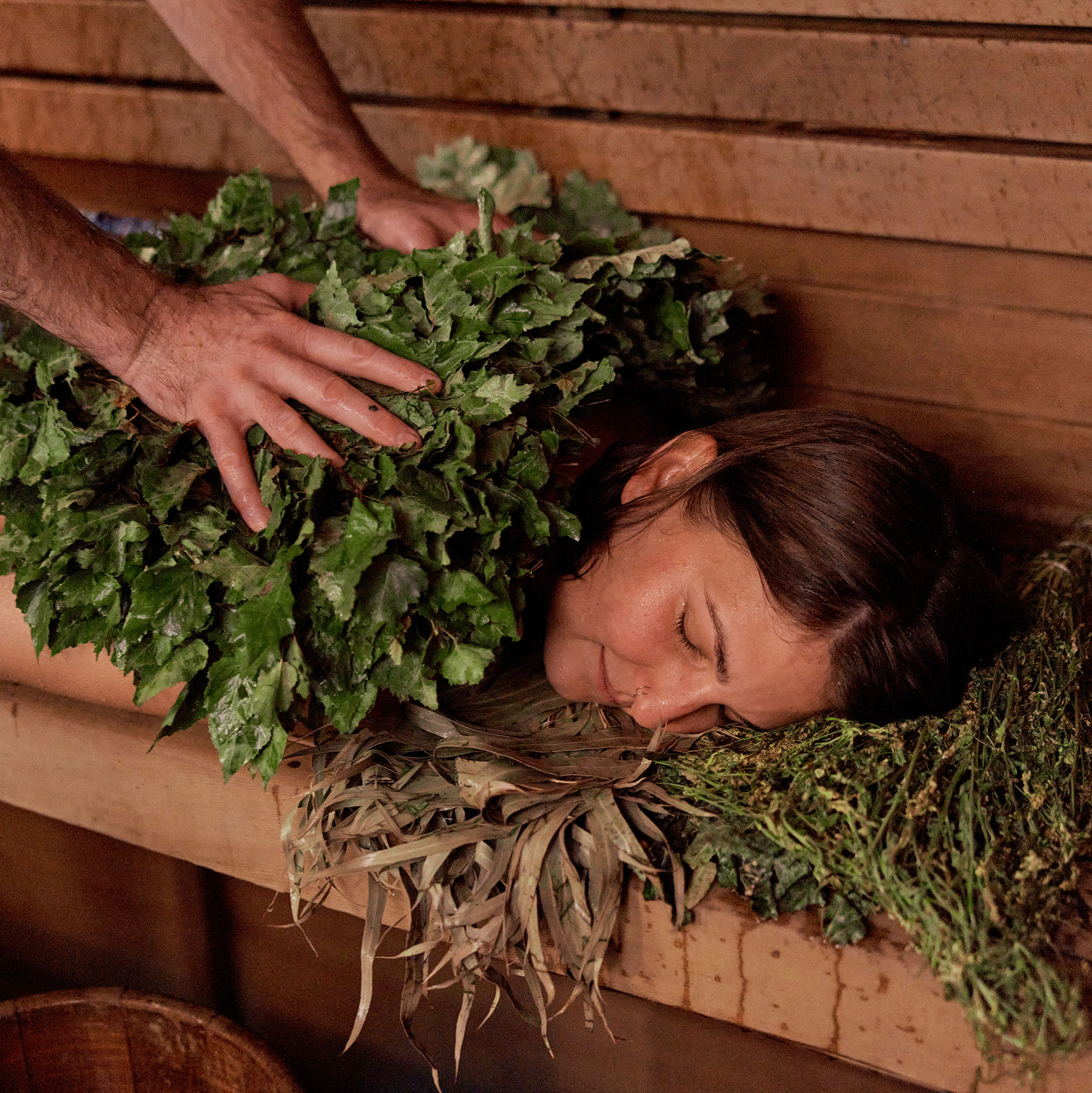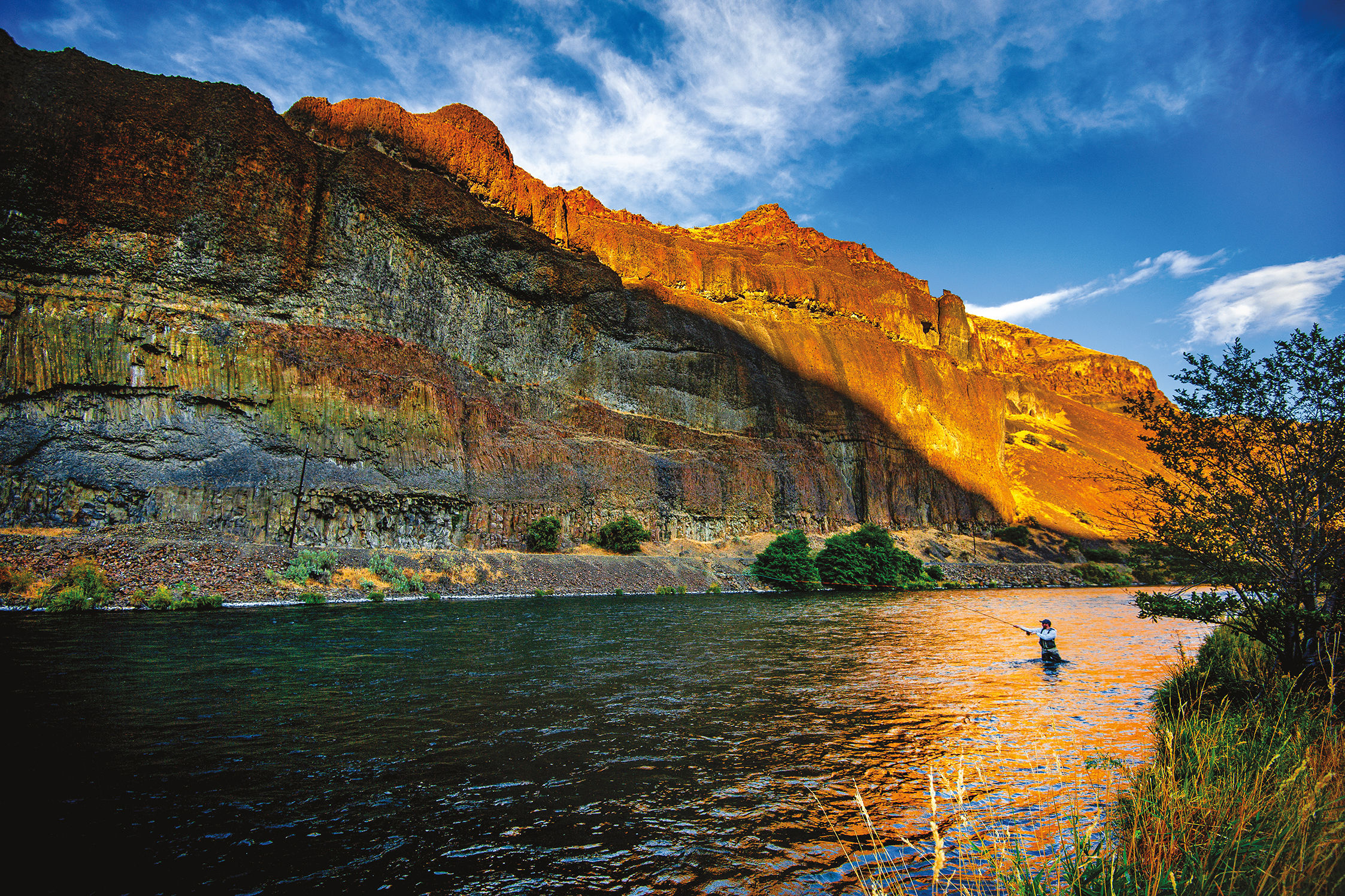Oregon’s Sauna Scene Has Never Been Better

Image: Courtesy Jayde Silbernagel
A pearl of sweat tickles behind my ear. It travels down my jawline, through my hair. I feel my breath—really feel it, hot, roasting my throat. My heart knock-knock-knocks within my chest, and at first, it panics: It’s squirming inside my rib cage, a lobster in a pot. And then, it settles into its metronome tick. I suddenly feel my body, all of it, the blood traveling the currents of me, that rattling heart.
On this March evening, I’m sitting in a metal trailer, parked along the Deschutes in Bend. In the corner is a small woodstove, crowned with sizzling, steamy rocks. Halina Kowalski-Thompson, the owner of Gather Sauna House in Central Oregon, hosts sessions here. Today, it’s 195 degrees Fahrenheit inside the sauna. It’s 47 degrees outside. It’s around 42 degrees in the river. That’s where we’re headed next. As we lower our bodies into the water, my lungs seem to forget how to breathe. I have to remind them—slow, through my nostrils. I count to myself, waiting for my brain to go slack. And then, after we return to our towels, we sit. Kowalski-Thompson tells us to resist the urge to abate the rumbles of discomfort with neutral warmth. I let the shakes erupt and then dissipate. I feel the droplets evaporate from my arms. My skin, my brain, my whole body feels like it’s vibrating.

Image: Courtesy Gather Sauna House
For Kowalski-Thompson, the most magical part of a sauna isn’t actually in the sauna, or the breath-stealing step into a river: it’s this moment afterward, sitting in nature, feeling alive. “You’re letting that feeling wash over you,” she says. “You’re seeing the birds flying over you, and you can hear their feathers. You’re that present.”
Saunas, and their numerous relatives, have existed for millennia—by current estimations, about 10,000 years. In Finland, people would dig pits in the ground, laying rocks at the base and warming them with campfires—just to tamper the flame with soggy peat, steam and smoke filling the surrounding shack. They would follow their sauna with a dip in the Baltic Sea or another bracing body of water, a way to cool off and wash away the soot and sweat. They were sacred spaces, entwined with folklore. “Pre-Christian Finns would have this harvest festival called Kekri, and there was a Day of the Dead thing to it,” says Andrew Nestingen, the chair of the University of Washington’s Department of Scandinavian Studies. “[The dead] would come back, and they’d warm the sauna for them.”
Thousands of miles away, in what we now call the Pacific Northwest, the Kalapuya would build similar structures often referred to as sweat houses or sweat lodges; they would heat rocks in a fire outside a hut built into the ground, where men would steam together. Many tribes in the larger area, including the Klamath, Takelma, and Nez Perce, had their own, distinct sweat-lodge traditions and structures; most involved fire-heated stones doused in water to create steam.
Much later, in the late nineteenth and early twentieth centuries, Finnish immigrants settled in Oregon, particularly Astoria, bringing their specific sauna culture with them. Around the same time, public baths and steam rooms began to emerge in earnest in downtown Portland and Astoria’s Uniontown neighborhood—places where Oregonians would bathe, sweat, steam, and gather. Both here and in Finland, saunas were a vital community meeting ground. “Without modern plumbing, it was a place to get clean,” Nestingen says. “People were born in saunas; dead bodies were washed in saunas. The sauna has a pretty important place in the phases of life, and socialization is an important part of that.”
Oregon, of course, is a rain-soaked state that has long loved a figurative (or literal?) hot spot. However, most locals have historically flocked to hot springs, places like Kah-Nee-Ta, Breitenbush, and Terwilliger. Sauna culture is not as established here compared to places like Minnesota. But that’s changing in the Pacific Northwest: Newly opened sauna gardens and spas have turned the cedar bench into the main event, as opposed to an afterthought alongside a hotel pool or soaking tub.
Those original smoke saunas, sweat houses, and public baths are a far cry from the infrared suites and eucalyptus-scented steam rooms that have billowed across the globe of late. In the Portland area alone, rent-your-own sauna studios like SweatHouz and Pure Sweat have emerged, as locals invest in backyard barrel saunas and Everett House visits. Luxe health spa and contrast therapy palace Knot Springs, which opened in 2016, completely sold out of memberships in early 2023; it now has an 800-person waitlist. And the variety of thermal bathing options seems to be growing in Portland: The hotly anticipated Cascada, a hotel and underground spa on NE Alberta Street, is home to what’s purportedly Portland’s largest hydrothermal spa, and memberships sold out before the place even opened. And Nordstrom alum Sadie Voeks is working on opening Portland’s first formal hammam, Harara.
Kowalski-Thompson partially attributes the growing interest in sauna experiences to the COVID-19 pandemic—both in the ways it forced people to reckon with their precarious physical health and in the ways people were isolated. “Through COVID, people had to slow down,” she says. “They had their minds on health, they were looking for new ways [to be healthy].… We’re entering a stage where people are looking for healthy places to connect that aren’t bars.”

Image: Courtesy Campfield
The culture within saunas varies dramatically. Some are silent, meditative places to feel present in your body, to luxuriate in the deafening thump of your heartbeat. Some are chatty social clubs where Portlanders, nude or nearly, strike up conversation encased in steam. Some are wellness-centric, borderline clinical, where staff exalt the physical and mental benefits of sauna or contrast therapy while walking you to a private space. And others fall somewhere in between. What they all offer—including those original public baths or smoke saunas—is the opportunity to be in your body, in the moment.
Two years after that first riverside shvitz, I found myself in a bathhouse 113 miles away, at the outdoor brand Snow Peak’s ritzy campground in Long Beach, Washington. That evening, young Portland couples, contrast therapy geeks with heatproof stopwatches, and extroverted Californians who had never shvitzed before all gathered within its cypress-lined sauna. Outside the insulated door, a group of kids, all under 10 years old, crowded around the bathhouse’s cold plunge, counting in unison as each of them shivered and winced within its depths. Their parents watched from the sauna bench, and we chuckled to ourselves. It wasn’t a serene, serious space; that’s fine. We could all count together, remembering how to breathe.










